The grasslands and wetlands spread across over 38.85 km2 of Pobitora Wildlife Sanctuary provide habitat for more than 22 mammal species, over 375 species of birds, 27 reptiles species, 9 amphibian species, 39 Pisces and many other species. The Pobitora Wildlife Sanctuary was notified on July 16, 1987 and it has the highest density of One Horned Rhinoceros in India around 107 rhinos counted in 2022 which is a growth of 5 rhinos over the last count of 102 conducted in 2018. The census conducted from 22nd March to 23rd March 2022 for two consecutive days found 50 female rhinos, 30 males and 27 calves.
Pobitora Wildlife Sanctuary location
Pobitora Wildlife Sanctuary is located on the southern bank of the Brahmaputra in the Morigaon district of Assam, India. The sanctuary is located in low-lying areas adjacent to the Brahmaputra rivers, Kolong and Pokoria. It is 52 km from Guwahati city and is also located in the Black Magic Capital of India, Mayong village. The area of the sanctuary is predominantly flat with a gently sloping from east to west excluding the BuraMayong hillock.
Location, Area, Name, and Administration
- Latitude – 26º 12′ N and 26º 15′ N
- Longitude – 91º 59′ E and 92º 05′ E
- District –Morigaon
- Range –Pobitora Wildlife Range.
- Park Area – Total Area of Pobitora Wildlife Sanctuary: 38.81 Sq. Km
Pobitora Wildlife Sanctuary in Assam map : Google Map
Pobitora Wildlife Sanctuary Boundary
The boundaries of the Pobitora Wildlife Sanctuary are perennial water sources such as the Garanga Beel and Haduk Beel as well as scattered shallow nallahs (small water bodies) and surrounded by 27 villages.
- North: The northern boundary of the sanctuary is marked by the Brahmaputra River which is one of the major rivers in India. The river serves as a natural boundary between the sanctuary and the surrounding areas.
- South: The southern boundary of the sanctuary is marked by the Garanga Beel.
- East: The eastern boundary of the sanctuary surrounded by agricultural fields and villages is marked by the Pokoria River which flows through the region and joins the Brahmaputra River.
- West: The western boundary of the sanctuary is demarcated by agricultural fields and human settlements that lie outside the protected area.
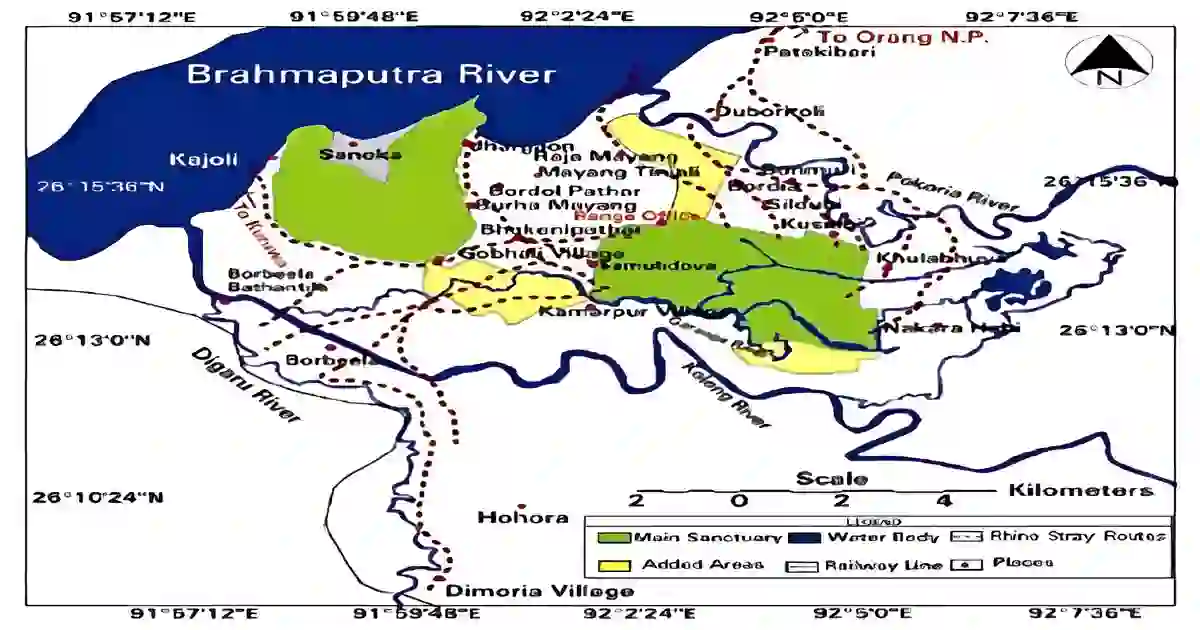
Pobitora Wildlife Sanctuary History
- On September 20, 1957, the government declared the adjacent Rajamayong Hill as Raja Mayang Hill Reserve Forest covering a 1191.86-hectare reserve area vide Govt. Notification no. AFS 427/54/11 Dt. September 20, 1957.
- The study also considered unpublished records regarding the presence of rhinos in the Pobitora area. Historical documents provide evidence of the existence of rhinos in the Pobitora and Mayong areas dating back to 1925. According to records within the Forest Department, there were approximately fourteen rhinos existence mentioned in Pobitora during the period of 1961-62.
- On November 18, 1971, the government of Assam declared 1584.76 hectares (15.84 sq. km) of reserved area (RF) as Pobitora Reserve Forest vide Notification no. 4 / Settlement / 542/54 Dt. November 18, 1971.
- In 1981, following the successful outcomes observed in Kaziranga and Orang National Parks, scientific grassland management practices were implemented in Pobitora Reserved Forest. This strategic approach led to a significant rise in the rhino population within Pobitora ultimately earning global recognition as an area with the highest density of the Great one-horned rhino on the world’s wildlife map.
- In view of the consistent growth in the rhino population, the area was subsequently designated and declared as the Pobitora Wildlife Sanctuary on July 16, 1987 vide Notification FWR / 19/87/990 Dt. 16 July 1987.
- The notification issued on July 16, 1987 included all the areas previously notified in 1957 and 1971.
- The final notification of the sanctuary was officially published by the government under Notification No. FRS / 19/87/153 DT in the Assam Gazette on March 17, 1998, and subsequently on May 13, 1998 which included the incorporation of additional Khas land within the periphery of the sanctuary. These areas include Murkata I & II with 336.00 hectares, Deeping with 40.00 hectares, Thingabhanga with 176 hectares, and Kamarpur/Rajamayong Courtier Khas land with an area of 552 hectares. Altogether, these areas contributed to a total coverage of 3880.62 hectares (38.85 sq. km) as specified in the notification.
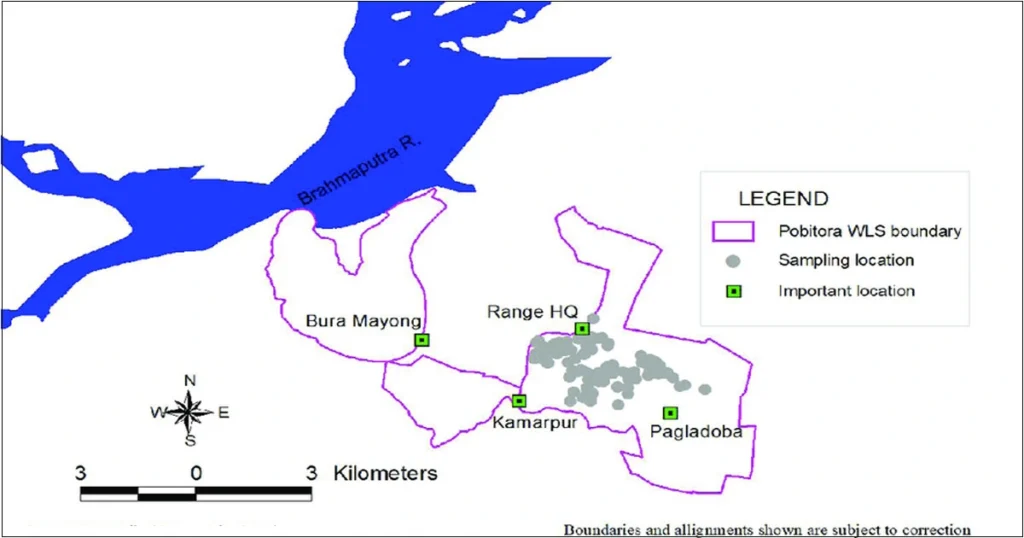
Pobitora Wildlife Sanctuary: Issues
The Pobitora Wildlife Sanctuary experiences several issues. Land encroachment is a major issue as the sanctuary’s boundaries are not clearly defined, leading to encroachment by nearby villages. This diminishes the sanctuary’s area and drives animals to stray, making them vulnerable to human threats.
Annual floods caused by the Brahmaputra and Kolong rivers disrupt the sanctuary, displacing wildlife and causing food shortages. Domestic cattle from neighboring villages also pose a significant problem, competing with wildlife for limited resources. This forces animals to venture outside the sanctuary, putting them at risk of harm.
Pobitora Wildlife Sanctuary is dealing with the overpopulation of rhinos causing animals to venture out in search of food and increasing the risk of conflicts with humans. There is also a concern about disease transmission between straying animals and domestic animals.

Translocation of Rhino from Pobitora Wildlife Sanctuary
With the collaboration of the Department of Environment & Forests, the Government of Assam, the International Rhino Foundation, WWF-India and the US Fish & Wildlife Service, facilitated the translocation of rhinos from Pobitora to Manas National Park Under the Indian Rhino Vision 2020 (IRV 2020) program. A total of Eight rhinos were translocated from Pobitora Wildlife Sanctuary to Manas National Park, six rhinos between December 2010 and January 2011 and two in 2008.
This collaborative effort aims to reduce pressure on Pobitora and minimize disease transmission between wildlife and domestic animals.
1. The tabular representation of the number of rhinos in Pobitora Wildlife Sanctuary during the past 17years:
Mayong- the Land of Black Magic near Pobitora
Mayong, known as the Land of Black Magic is located near the picturesque Pobitora Wildlife Sanctuary in Assam, India. Surrounded by the Brahmaputra River and rivulets like Pakaria and Daipara, Mayong exudes a magical charm. The village is also rich in archaeological relics, including Asia’s longest stone inscription. Although the practice of Black Magic has ceased, the people of Mayong still employ magical rituals to heal various ailments. Notably, a local witch doctor uses a copper dish to alleviate back pain, showcasing an impressive magical act. Despite its mystical history, Mayong now focuses on utilizing magic for the betterment of society.

The Burha Mayong Rock Inscriptions near Pobitora
Burha Mayong, located near the Pobitora Wildlife Sanctuary in Assam’s Morigaon district, is renowned for its rock inscriptions from the Medieval Period. The rock inscriptions at Burha Mayong are mainly located on quartz and feldspathic gneiss hillocks by the banks of the Kopili River, an important tributary of the Brahmaputra River.
The rock cut inscriptions at Burha Mayong hold the distinction of being the longest in Asia. This group of inscriptions has- five lines on the right, six lines on the left and fifteen lines in the middle, arranged horizontally. They are believed to consist of three consecutive series of inscriptions. The inscriptions measure 395 cm in length and 112 cm in breadth. Each individual inscription within the series measures 85 cm X 47 cm, 40 cm X 112 cm, and 270 cm X 30 cm, respectively. Although the contents of these inscriptions have their significance and are believed to belong to the medieval period remained undeciphered.

Pobitora Wildlife Sanctuary Geography
The Pobitora Wildlife Sanctuary is surrounded by the Brahmaputra floodplains which are subject to annual floods due to their low-lying nature. The soil in the vicinity of Pobitora is fertile clayey loam with silt content. The sanctuary is blessed with perennial water sources such as the Garanga Beel and Haduk Beel as well as scattered shallow nallahs (small water bodies). While water scarcity is not an issue in Pobitora due to heavy floods each year, the wetland areas surrounding the sanctuary become heavily silted.
The sanctuary stretches across alluvial plains and hilly ranges situated between the northern banks of the Brahmaputra River and its southern tributary Kolong. Pobitora exhibits a well-connected network of wetlands with several perennial ones like Garanga, Duboritoli, Sitalmari, Haduk, Dholi and Pagladova. Outside the sanctuary’s boundaries numerous small hillocks such as Kasasila Hill, Hatimuria Hill, Kukuri Hill, Boha Hill, Kardia Hill, Kainarpur Hill, Mitoni Hill, Govardhan Hill and Panbari Hill are scattered. The altitude in the area ranges from approximately 50 meters to 260 meters above mean sea level.

Pobitora Wildlife Sanctuary Climate
The climate of Pobitora Wildlife Sanctuary is a sub-tropical monsoon type characterized by three different seasons. The dry mild winter season extends from November to April and occasionally receives showers. During this period the weather in the sanctuary tends to be quite pleasant. The maximum temperature is a pleasant 20 degrees Celsius and at night bring a slight chill with a minimum temperature of around 9 degrees Celsius. The humidity during this time hovers around 40%.
The following season is the humid and windy summer which occurs from May to June. The minimum temperatures range from 33 degrees Celsius to 12 degrees Celsius during this period. The latter part of the summer experiences rainfall.
The rainy season in Pobitora spans from mid-June to September and receives an average annual rainfall of 2000 mm. This period is characterized by both high temperatures and humidity. The maximum average temperature reaches around 31 degrees Celsius, and the humidity reaches approximately 95%.

Biodiversity of Pobitora Wildlife Sanctuary
1. Grassland Vegetation:
Pobitora Wildlife Sanctuary is characterized by diverse grassland vegetation comprising of around 15 grass species. Some notable grasses include Cynodon dactylon, whip grass (Hemarthria compressa), vetiver (Chrysopogon zizanioides), ravennagrass (Saccharum ravennae), Phragmites karka, southern cutgrass (Leersia hexandra), and signalgrass (Brachiaria pseudointerrupta). These grasslands serve as a crucial food source for the Indian rhinoceros supporting the second-largest population increase from 102 in 2018 to 207 in 2022 of this species in Assam
2. Mammals:
The sanctuary is a place to various mammal species such as the golden jackal, wild boar and feral water buffalo. In the hilly areas animals such as the barking deer, Indian leopard and rhesus macaque also can be found.
3. Avian Diversity:
Pobitora Wildlife Sanctuary is recognized as an Important Bird Area, attracting more than 8200 migratory bird species. The sanctuary provides a favorable habitat for these birds, making it a significant site for birdwatching and conservation efforts.
4. Reptiles:
PobitoraWildlife Sanctuary also supports a variety of reptiles, contributing to its rich biodiversity. These reptiles add to the overall ecological balance of the sanctuary.
5. Avifauna:
The sanctuary’s marshy wetlands, abundant in fish and aquatic fauna, create an ideal habitat for around 375 bird species like Whistling Teals, Ospreys, Eagles, Cranes, and more.
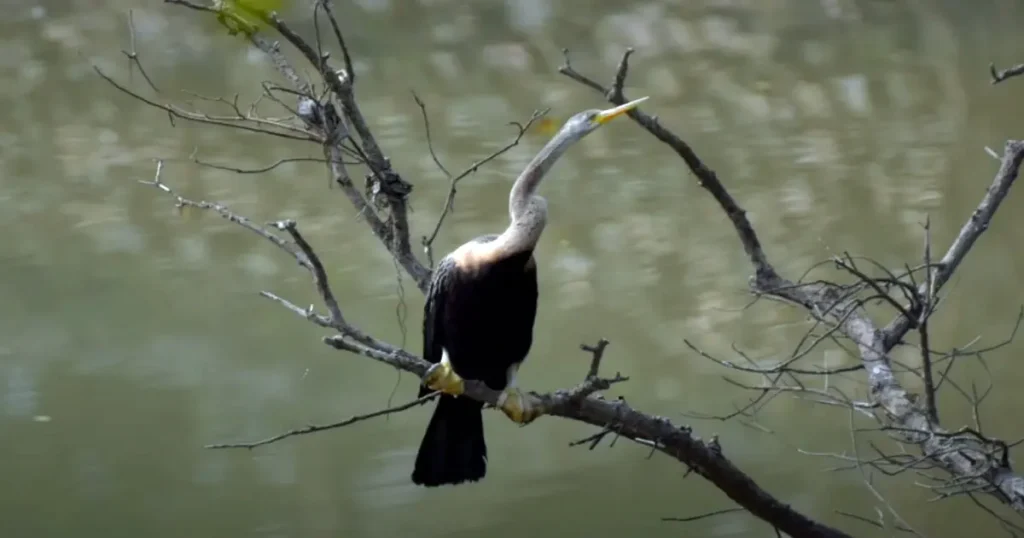
Pobitora Wildlife Sanctuary Records 107 Rhinos in 2022 Census
The Pobitora wildlife sanctuary in Assam has announced a remarkable increase in its rhinoceros population. The latest census conducted on March 22 and 23, 2022, revealed a total of 107 great one-horned rhinoceros in the sanctuary. This includes 50 females, 30 males, and 27 calves.
Despite covering a relatively small area of 38.81 square kilometers in the Marigaon district, the sanctuary has shown significant improvement in its conservation efforts. Compared to the previous census in 2018, the rhino population has increased by five individuals.
To conduct the census, nine observers and eleven enumerators from various organizations were deployed across different sections of the sanctuary. The Block Count Method was utilized by forest officials to assess the rhino population, with support from local NGOs such as Hipa Aranyak, Elephant Foundation, and WWF. The census team received assistance from local communities, police officials, district administration, conservation partners, resort owners, and the Jeep Safari Owners Association.
The Pobitora wildlife sanctuary boasts the highest density of rhinos within its limited area, contributing to the overall well-being of the wildlife. The sanctuary has effectively prevented poaching incidents since 2014.
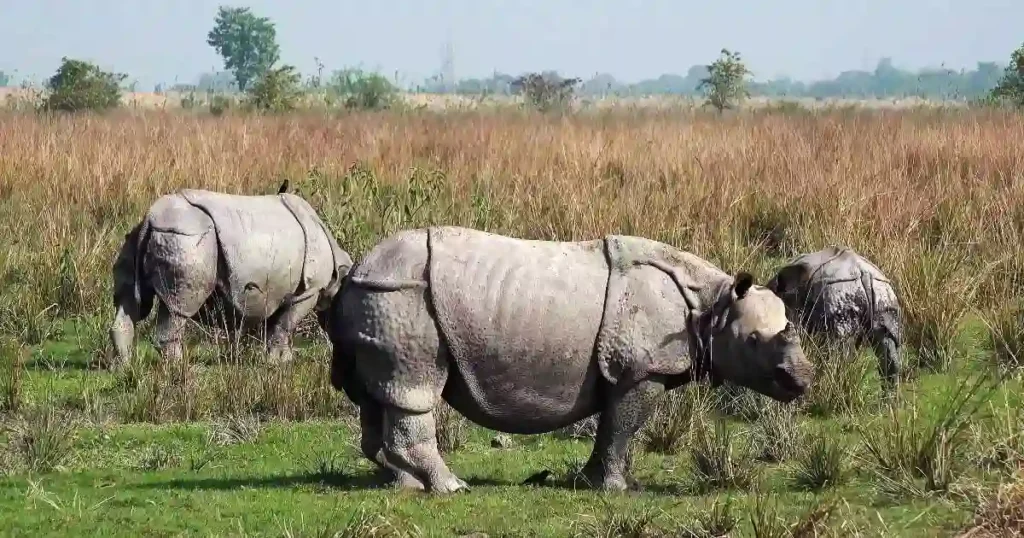
The Third “Annual Waterbird Census 2022” in Pobitora Wildlife Sanctuary
The Pobitora Wildlife Sanctuary is also a crucial habitat for both migratory and resident bird species in its numerous water bodies. In 2022, the third “Annual Waterbird Census 2022” was conducted at Pobitora Wildlife Sanctuary by the Guwahati Wildlife Division of the Assam Forest Department and the biodiversity conservation organization Aaranyak. With the active participation of around 30 people including forest department staff, Aaranyak members and volunteers, the census identified 56 species of water birds with a total count of approximately 8,200 individuals. The census aimed to gather data on these bird species and monitor their populations for long-term conservation efforts.

Best Time to Visit Pobitora Wildlife Sanctuary
The Pobitora Wildlife Sanctuary experiences three distinct seasons: Summer, Monsoon, and Winter. From November to early May, the sanctuary enters the winter season offering favorable temperatures for enjoying Jeep/Elephant Safaris into the sanctuary’s interior. Late May and June mark the summer season with slightly higher temperatures, typically around 36 degrees Celsius. The monsoon season occurs from July to September characterized by heavy downpours that can lead to the park getting submerged.
For tourists, the Pobitora Wildlife Sanctuary is open for viewing from October to April each year. The optimal time to visit is during the winter months specifically from November to April. The sanctuary remains closed from May to September due to the heavy monsoon floods that affect the entire northeastern region of India during that period.
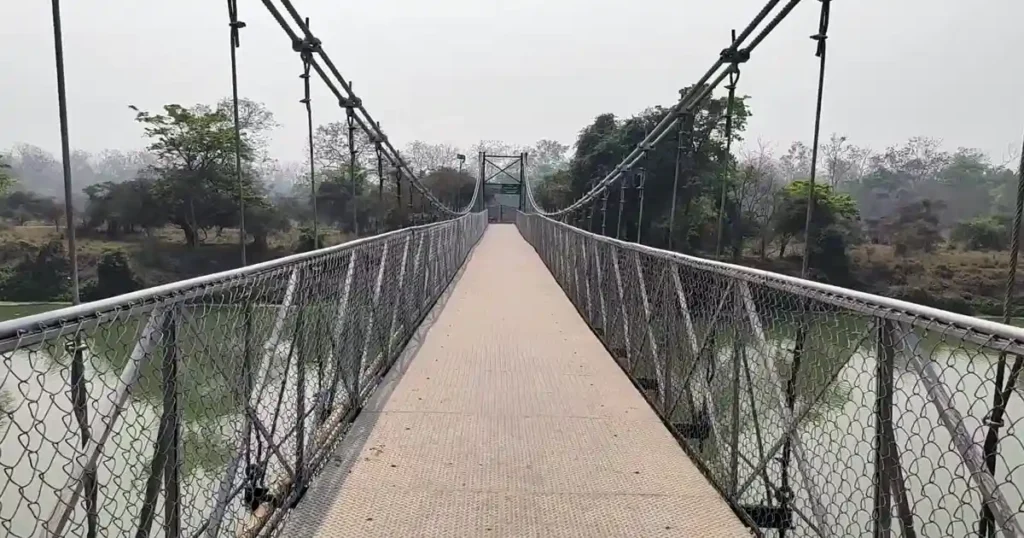
How to reach Pobitora Wildlife Sanctuary
1. By Train: The nearest railway station of Pobitora Wildlife Sanctuary is Guwahati Railway Station which is approx 44.9 km away from the Sanctuary. There are multiple options available from the station and getting your hotel is quite easy.
2. By Air: The nearest airport to Pobitora Sanctuary is Guwahati International Airport which is 71.6 km approx away from the Sanctuary. On arrival, you can book through online apps (Ola, Uber) and hire taxi or cab.
3. By Road: As Pobitora Wildlife Sanctuary is well-connected with good road networks, Ride-hailing services like Ola and Uber are available providing convenient transportation options.
What to do at Pobitora Wildlife Sanctuary
The Pobitora Wildlife Sanctuary provides thrilling jeep safaris, elephant safaris and boat safaris, allowing visitors to explore the diverse ecosystems and encounter fascinating wildlife.
1. Jeep Safari in Pobitora Wildlife Sanctuary
The Jeep Safari at Pobitora Wildlife Sanctuary offers a thrilling opportunity to explore the sanctuary and observe wildlife including the Indian One Horned Rhinoceros. The safari starts at 7:00 AM in the morning and lasts about an hour and afternoon shifts start at 1:00 PM. It costs INR 3650 for Indian nationals and INR 6500 for foreign nationals per jeep.
The safari starts from the resorts and takes you on a designated route accompanied by armed forest guards who act as guides. You can see various animals, birds such as deer, wild boars, leopards and Indian Hornbills. As only a limited number of jeeps are allowed at a time advance Reservation is suggested. Overall, the Jeep Safari at Pobitora Wildlife Sanctuary is a thrilling adventure for nature enthusiasts.
| Pobitora Wildlife Sanctuary Jeep Safari price: | ||
| Price | INR 3600 (Indian) | INR 3600 (Foreigner) |
| Safari Time | 7.00 AM to 8.30 AM, 8.30 AM to 10.00 AM & 9.30 AM to 11.00 AM | 1.00PM to 2.30PM, 2.00PM to 3.30PM & 7.00AM to 3.00PM (Full Day Safari) |
| Safari Area | Core Area of Pobitora Wildlife Range | |
| Charges include entry charges, driver and jeep charges. | ||
| Pick up & drop: Mayong village/resorts | ||
2. Elephant Safari in Pobitora Wildlife Sanctuary
Explore Pobitora’s Wildlife Sanctuary on an Elephant Safari, a majestic experience aboard the ride of the Kings. With the world’s highest population density of Indian One-Horned Rhinoceros, this sanctuary offers abundant opportunities for close encounters with these mighty beasts. Starting as early as 6:30 AM in the morning witness the beauty of the flora, fauna and avifauna. The hour-long safari guarantees sightings of the Indian One-Horned Rhinoceros up close, a sight not always guaranteed in other national parks and wildlife sanctuaries in Assam.
Two slots are generally available for the Elephant Safari with the first one at 6:30 AM and the next at 7.30 AM. The safari time is subject to change based on weather conditions such as rain or dense fog. It is advisable to book the Elephant Safari in advance during the peak tourist season from October to April as a high visitor come to visit the sanctuary during this period and limited elephants.
| Elephant Safari at Pobitora | |
| Nationality | Safari Rates at Pobitora Wildlife Sanctuary |
| Indians (Per Head) | 850 |
| Foreigners (Per Head) | 1850 |
| Safari Timing: | 6:30 AM & 7:30 AM |
3. Boat Safari in Pobitora Wildlife Sanctuary
The Boat Safari is also available at Pobitora Wildlife Sanctuary. This safari starts from a point near the sanctuary and takes you on a tour of the River Brahmaputra. Highlights include a visit to the smallest inhabited river island in the world, Umananda Island, breathtaking riverside views, the opportunity to spot highly endangered river dolphin species, and a lunch at a river island retreat. The cost for a day-long boat safari at Pobitora is INR 2,000 per person.
| Boat Safari at Pobitora | |
| Nationality | Safari Rates at Pobitora Wildlife Sanctuary |
| Indians (Per Head) | 2000 |
| Foreigners (Per Head) | 3500 |
Where to Stay?
If you are considering staying at Pobitora Wildlife Sanctuary, you have several options including Arya Eco Resort, Zizina Otis Resort, Mayong Villa, Mystique Mayong Eco Resort, Pobitora Guest House, and many more, all of which are located very close to the National Park. For lunch, there are many hotels within the park where you can taste various Assamese dishes. On your return journey to Guwahati, you’ll find the Chanaka picnic spot halfway, where you’ll also find the beautiful Hill Mynah Bamboo Resort. It offers a completely relaxing experience, and if you wish, you can stay there as well.
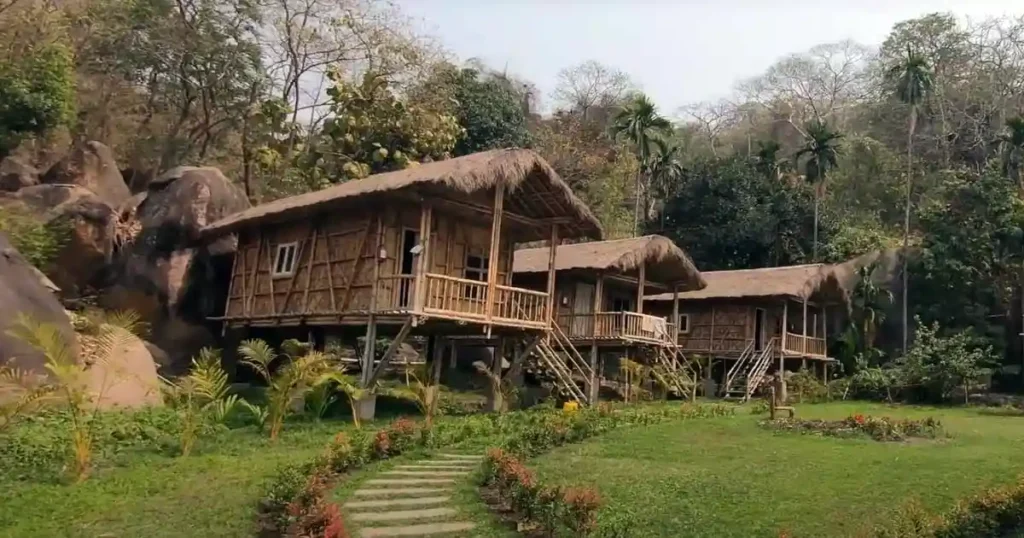
Pobitora Wildlife Sanctuary ticket price:
The rates for different types of safaris are subject to change according to time.
Conclusion
In conclusion, Pobitora Wildlife Sanctuary in Assam, India is a vital conservation area known for its thriving Indian rhinoceros population. Covering 38.85 square kilometers, the sanctuary provides a diverse habitat for various wildlife species including over 8200 migratory birds. While successful in protecting the rhinoceros, overpopulation has led to challenges, prompting translocation efforts. Pobitora Wildlife Sanctuary’s role in preserving biodiversity and its appeal to nature enthusiasts make it a significant destination for conservation and research.
FAQ.
a.) What is pobitora wildlife famous for?
Pobitora Wildlife Sanctuary has the highest density of Indian rhinoceros populations in Assam, 107 rhinos as per 2022 census.
b.) Which is better Kaziranga or Pobitora Wildlife Sanctuary?
Kaziranga National Park and Pobitora Wildlife Sanctuary offer different experiences. Kaziranga is larger, renowned for its diverse wildlife including tigers, elephants, and rhinos. Pobitora has the highest rhino population density and is less crowded. Consider your preferences and interests when choosing between the two.
c.) Is pobitora part of Kaziranga National Park?
No, Pobitora Wildlife Sanctuary is not part of Kaziranga National Park. They are separate protected areas in Assam, India known for their Indian One-Horned Rhinoceros populations.
d.) Pobitora wildlife sanctuary ticket price?
Entry fee for Indian citizens is around INR 50, Foreigner INR 500
e.) Pobitora wildlife sanctuary timings?
Elephant Safari: 06:30 AM / 07:30 AM and 14:30 PM
Jeep Safari: 07:00 AM and 15:00 PM
f.) The relevance of Pobitora Wildlife Sanctuary in UPSC examinations:
The Pobitora Wildlife Sanctuary was notified as a Wildlife Sanctuary on July 16, 1987, covering an area of 38.85 km². It boasts the highest density of One-Horned Rhinoceros in India and is situated on the southern bank of the Brahmaputra River in the Morigaon district of Assam, India.
YOU MAY ALSO LIKE
- Sonai Rupai Wildlife Sanctuary
- Bornadi Wildlife Sanctuary
- Chakrashila Wildlife Sanctuary
- Bura Chapori Wildlife Sanctuary
- Dibang Wildlife Sanctuary
REFERENCES
- Pobitora Wildlife Sanctuary:https://pobitorasafari.in/

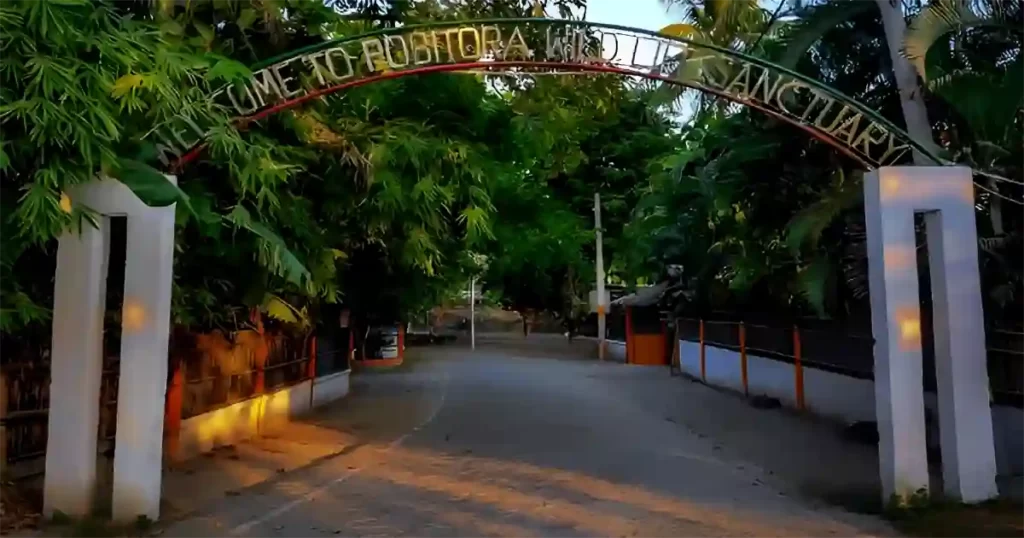




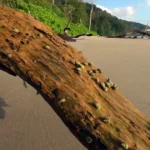
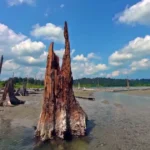

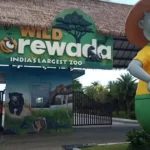
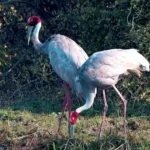

1 thought on “Pobitora Wildlife Sanctuary”